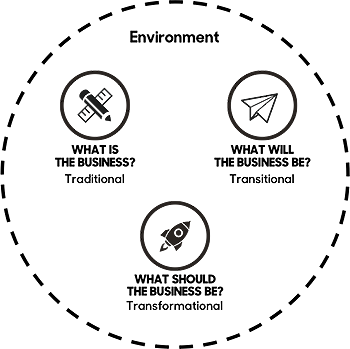You’ve probably already heard the news on design oriented companies, including names like Apple, IBM, Nike, Procter & Gamble, Walt Disney and Whirlpool, outperforming the S&P index by 228% over the last 10 years. So there definitely is a valid reason to state, that good design also makes good business. But how do you know if design is good? Too often design is evaluated based on gut feeling and personal likes or dislikes only, but to me, good design is design which meets the business targets.
“Good design is good business” - Thomas Watson Jr., former president of IBM
This post explores what are the mechanisms in which the design investments contribute to the business success. So, is it possible to actually measure the financial impact of individual design projects? The obvious answer is, that it depends on the business you are in, your selected competitive strategy and the objects of design i.e. what are you actually trying to achieve with the design project.
Objects of design
As suggested by the Design ROI model developed in Aalto University, the objects of design can be categorized to Product, Brand, Service and Space. Design can be used e.g. to make your brand more relevant to your target audience, provide products that are more lucrative and create service experiences that differentiate you from the competition or spaces that let the products shine and make them easy to discover. Depending on the business you are in, all these categories or only some subset of them may be relevant to your business and the measurement criteria for design depends on both your business domain and the selected objects of design.
In order to identify the relevant objects of design, you can utilize traditional business tools such as SWOT analysis, STEEP/PEST analysis and competitive analysis. Or you could use scenarios planning or Drucker’s paradigm of change model to think how your business is going to evolve in the future.
 Drucker's paradigm of change model
Drucker's paradigm of change model
Competitive strategy
In his classic book Competitive Strategies, Michael J. Porter identifies three basic competitive strategies: cost, differentiation and focus. Whatever strategy you have, design related research can help you to understand your target audiences more deeply and design can be applied to bring the target audience the desired benefits, be it cost savings through process efficiency, products catered specifically to their needs or differentiation through brand or product features. Again, different competitive strategies are relevant in different business domains, but regardless the domain, only one player in the domain can be the cheapest, others need to position themselves somewhat differently in order to stay competitive.
Impact of business domain
As already mentioned above, the business domain you are in has an impact both to the relevant objects of design as well as selection of the competitive strategy. There are some quite obvious combinations of competitive strategy and objects of design, e.g. using product design to gain cost reductions in the business of manufacturing physical goods or using brand design to differentiate from competition and thus boost sales in retail business. But it might also be worth thinking outside the box. Even if you are in B2B domain manufacturing physical products, you could differentiate yourself through branding. Or you could also differentiate by providing value adding (physical or digital) services to your customers. You could even use space design more creatively. What if investing in design of work spaces would actually boost the efficiency of your employees and thus create cost reductions or increase production capability?
In retail business, all the objects of design probably are relevant, if you have selected differentiation or focus as your competitive strategy. But even then, you can get more creative in combining objects of design with your competitive strategy. What if your promotional space would combine digital and physical aspects to create even more appealing experience? Or could your promotional space actually be in virtual reality? Even if you’re doing retail through digital channels, could inclusion of some physical service enhance the experience of your customers?
And these were just a few examples. The ways of combining objects of design to competitive strategy & business domain are numerous, but whichever combination you choose, the keys to success lie in understanding your customer’s needs and catering to those needs. And that’s where design can have a huge impact, regardless of your domain.
Ok, so what about the measurement?
Well, as with any measurement case, you need to start with the targets first. So what is the purpose of the design project? Often design briefs specify the target to be brand strengthening, improved usability or user satisfaction or even creating innovation. While these measures might be useful as such, I’d personally like to dig a little deeper and figure out what is the expected financial benefit you expect to get. E.g. if you you want to strengthen your brand, why do you do that? If it is to increase sales of an existing product or product specific margin, shouldn’t you measure those instead of brand awareness?
Or if you want to enhance user satisfaction, what is the actual impact you expect that to have? Should it contribute to number of returning customers? Or to the actual price the users of your products are willing to pay?
Whatever the target, I’d like to define as concrete financial measurements as possible, because that is the only way to justify the design investment. And when you have your financial targets in place, you need to figure out the current state, the baseline to which you’ll be comparing things in future and which you can use as the basis for calculating ROI for your design project:
ROI = (Gain from investment - Cost of investment) / Cost of investment
where gain from the investment is new value - baseline value. With this calculation, you’ll be able to play with different scenarios for the ROI of your design project. What if the design project enabled to you save 10% in your yearly production costs? Or if it enabled you to sell 15% more? Or increase the product price by 5%? You can use this calculation to define the exact numeric targets for your design project to justify the design investment and you can also use the same criteria afterwards to define whether the design project was successful.
When evaluating the success of a design project, one more thing to consider, is that changes to other variables besides the design should be kept constant. E.g. if you were trying to increase your sales volume and started a product design project in order to achieve that goal, you should keep constant the other aspects of the product than the design itself, including things like product price, promotions etc. Also, it’s probably wise to focus on one object of design at a time, because otherwise it’s quite impossible to figure was the increase in the sales volume caused by the changes in product design, in service design, in brand design or in space design. But this depends on the case, for example when launching a completely new product, you should probably aim for a holistic experiences across all the objects of design.
So, in summary, you can use design in many ways to support your business strategy and it is possible to measure success of design projects, both in terms of “softer” criteria like brand awareness and customer satisfaction as well as in terms of “harder” monetary indications. So next time you think about starting a design project, spend some time to consider what is the business impact you are trying to achieve and what is the most relevant criteria to measure the success of the project! And don’t keep that information secret from your designers either, because without the information on your actual targets it’s quite impossible for them to help you to reach them.
 Heli IhamäkiVP, Customer Experience Solutions
Heli IhamäkiVP, Customer Experience Solutions


